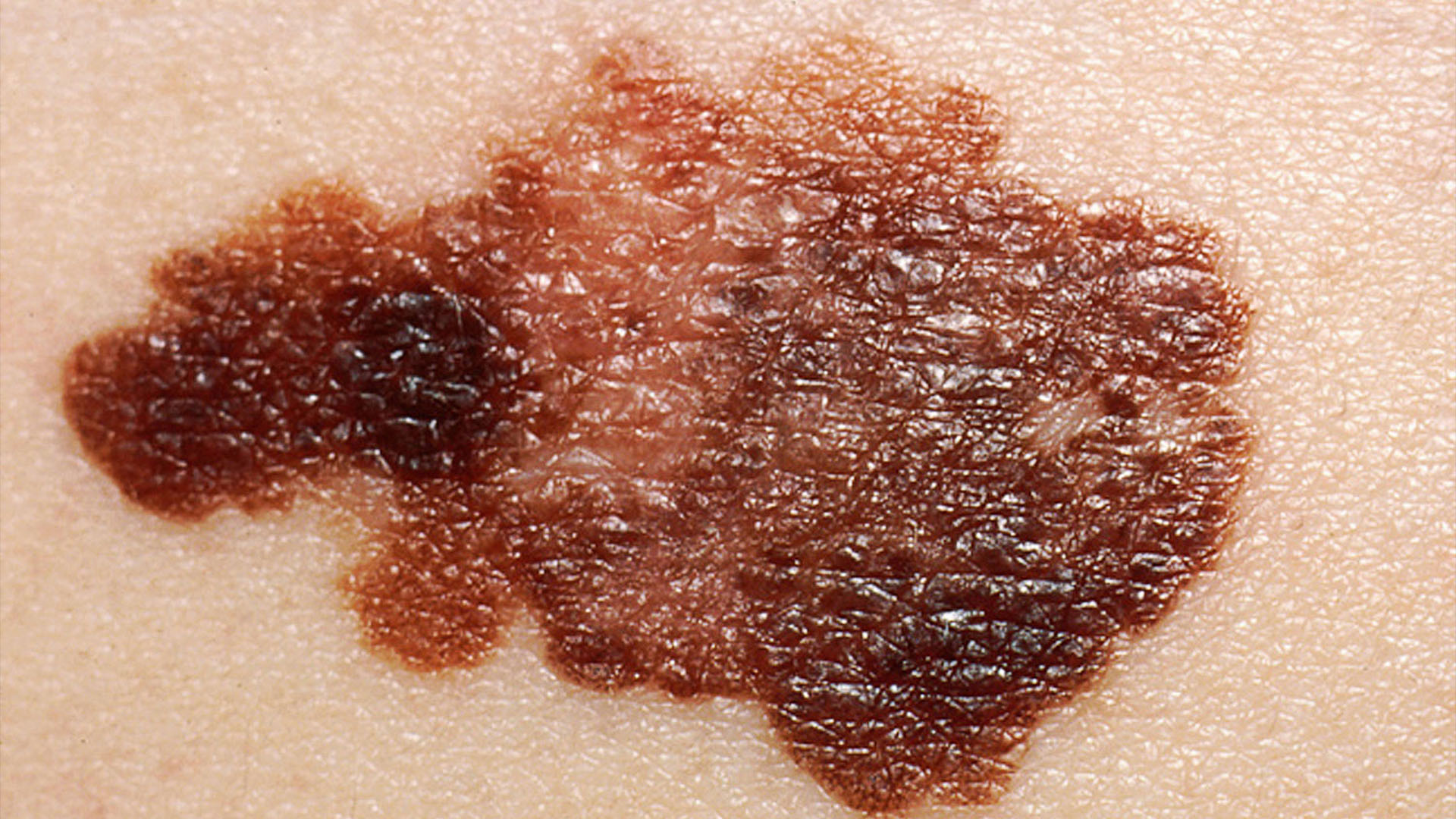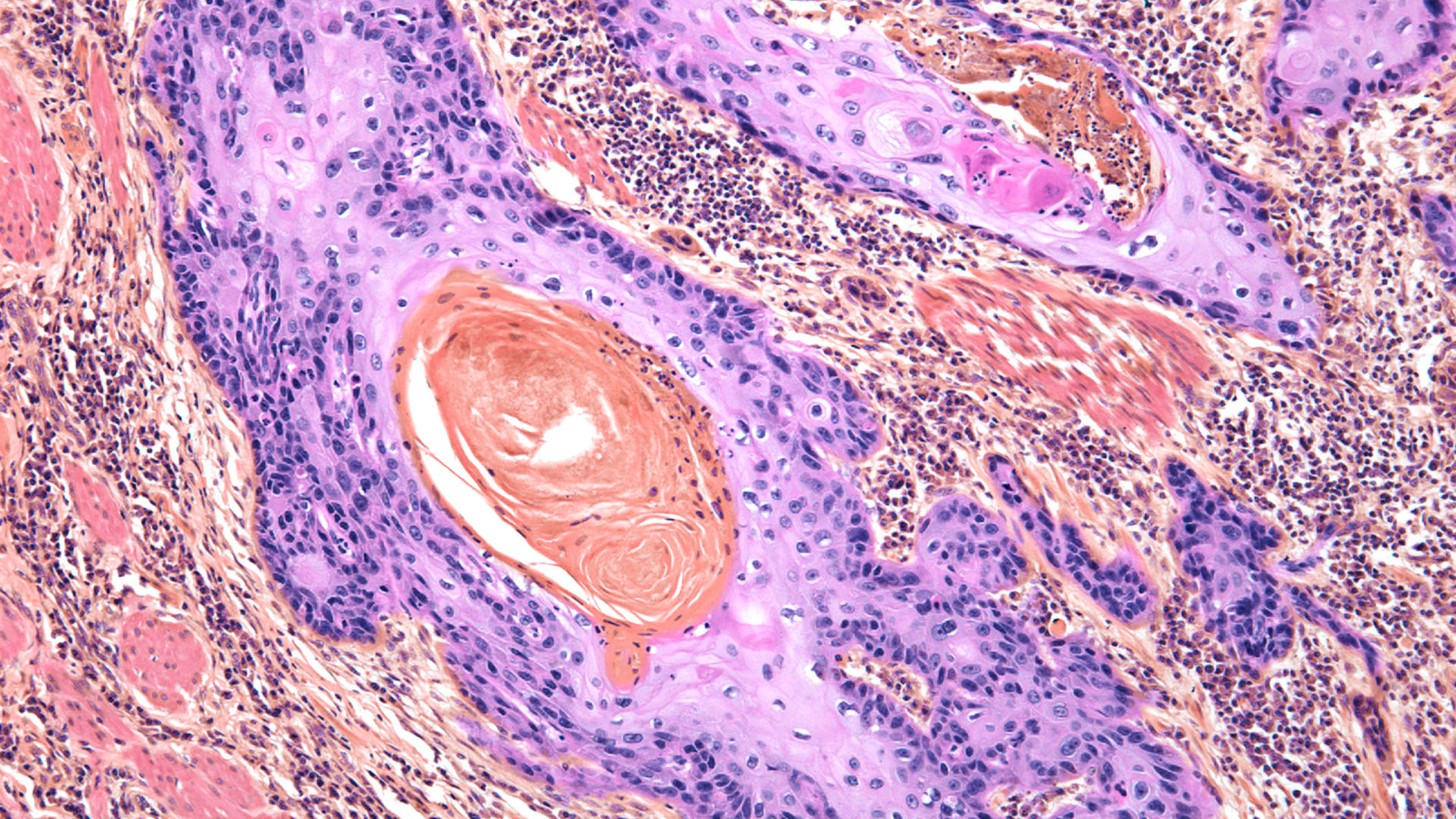
Skin cancer is the uncontrolled growth of abnormal cells in the skin's outermost layer, the epidermis. Skin cancers are primarily caused by exposure to DNA-damaging ultraviolet (UV) radiation.
An estimated 1 in 5 Americans will develop skin cancer in their lifetime, making it the most common form of cancer in the U.S. Fortunately, it is also one of the most preventable cancers, because sun exposure and tanning bed use are major risk factors in its development, according to the American Academy of Dermatology (AAD).
Related: How does sunscreen work?
Skin cancer types
There are four main types of skin cancer: basal cell carcinoma (BCC), squamous cell carcinoma (SCC), melanoma and Merkel cell carcinoma (MCC), according to the Skin Cancer Foundation (SCF).
What does skin cancer look like?
Actinic keratosis (AK): AK is a precancerous condition characterized by dry, scaly spots or patches. It typically appears on areas that are often exposed to the sun, such as the neck, hands, forearms and head. Being fair-skinned, having a history of severe sunburns and having a weakened immune system raises the risk of AK. AK is typically a precursor to squamous cell carcinoma, Dr. Doris Day, a board-certified dermatologist in private practice and attending physician at Lenox Hill Hospital in New York City.
Basal cell carcinoma (BCC): The most common type of skin cancer, BCC often appears as flesh-colored, pearl-like bumps or pinkish skin patches. It also develops on sun-exposed areas of skin, but does not grow quickly and rarely spreads, according to the Skin Cancer Foundation.
Squamous cell carcinoma (SCC): This cancer typically appears on sun-exposed skin areas and often resembles a scaly patch, firm bump or ulcer that heals and then re-opens, according to the AAD. It is the second-most common type, and if not caught early, it can grow deep into the skin and injure nerves, blood vessels and other body parts.
Melanoma: Melanoma begins in pigment-producing cells known as melanocytes. While it is less common than other forms of skin cancer, melanoma can be deadly because it can spread to other organs rapidly. About 186,680 new melanoma cases will be diagnosed in 2023, according to the SCF, and an estimated 7,990 of those people will die. Melanoma often appears suddenly as a new dark spot, or may crop up in an existing mole.

Skin cancer risk factors
According to the ACS, the main risk factors for skin cancer include:
- Fair skin. This is because darker skin contains more melanin, which blocks the sun's rays and acts as a natural sunscreen.
- Living in sunny or high-altitude climates.
- Many or abnormal moles.
- Precancerous skin lesions.
- A weakened immune system, such as in people with HIV or AIDS, or people taking immunosuppressant drugs following an organ transplant.
- Smoking. Tobacco use may increase the risk of cutaneous squamous cell carcinoma, according to a 2012 meta-analysis published in the journal Archives of Dermatology.
Is skin cancer deadly?
Nearly all skin cancers, if caught early, are curable with treatment, Day told Live Science.
Melanoma is the deadliest skin cancer by far. But even there, the five-year survival rate for patients whose lesion is detected early is about 94% percent in the U.S., according to the SCF. But if the cancer reaches the lymph nodes, the five-year survival rate is 71% percent, and it falls to just 32% percent if the cancer has spread to distant organs.
Related: 10 common skin conditions
What causes skin cancer?
Most skin cancers are caused by UV exposure that damages the DNA of skin cells.
So people who get too much sun or sunburns have a higher risk for skin cancer, as all wavelengths of UV radiation that reach the Earth's surface, including UVA and UVB, accelerate skin aging and promote skin cancer development, according to the World Health Organization. Indoor tanning equipment, such as sunbeds and tanning lamps, is another source of harmful UV radiation. In some cases, such equipment may emit stronger UV radiation than the sun, according to the AAD.
UV rays damage genes. If UV causes mutations in genes that control the growth of skin cells or those involved in tumor suppression or DNA repair, it can lead to cancer, according to a 2010 review in the International Journal of Dermatology. The effects of UV radiation are dose-dependent, meaning more UV exposure leads to more damage.
Arsenic is another cause of skin cancer, according to a 2010 review published in the journal Cancers. People may ingest arsenic in contaminated drinking water; the element is found in well water in some areas, for example, the American Cancer Society (ACS) notes. Workers exposed to coal tar, paraffin and certain petroleum products may also have an increased risk of skin cancer.

Is skin cancer genetic?
Non-melanoma skin cancers don't usually run in families, but people with a family history of melanoma face a higher-than-average risk of developing the disease themselves. According to a 2016 review published in the Journal of the American Academy of Dermatology, about 10% of melanomas stem from some inherited genetic mutations that can increase one's risk of developing melanoma between four- and more than 1000-fold.
How is skin cancer diagnosed?
The first step in diagnosing skin cancer is a skin exam. Any patches of skin that resemble one of the four types of skin cancer, or any rapid, unusual change in any mole's size, shape or color, should be looked at by a doctor, according to the AAD.
Doctors may use a dermatoscope, a light and magnifier that helps doctors see a few layers into the skin, to examine irregularities, Day said.
If the doctor notes something irregular, a small piece or the entire lesion will be removed and sent to a lab for testing. If this biopsy reveals cancer, it will also determine what type, AAD noted.
According to the CDC, a simple method for recalling symptoms of skin cancer is the acronym "ABCDE," which stands for:
- Asymmetrical: Skin lesion has an irregular shape.
- Border: A skin lesion has a jagged or irregular border.
- Color: Skin lesion has an uneven color or is multicolored.
- Diameter: Skin lesions larger than a pea are more likely to be cancerous than small ones.
- Enlarging: Skin lesion has enlarged or evolved during the past few weeks or months.
How is skin cancer treated?
Small, non-melanoma skin cancers may not require any treatment other than surgical removal. Other skin cancer treatments depend on the size, depth and location of the lesions, according to the NCI.

Examples of skin cancer treatments
- Cryosurgery: Freezing tissue with liquid nitrogen or liquid carbon dioxide.
- Laser surgery: Using a laser beam as a surgical scalpel to remove tissue.
- Chemical peels: Applied to the skin to dissolve abnormal cells. Often used for actinic keratosis.
- Radiation therapy: Often deployed when surgery is not suitable.
- Chemotherapy: For less aggressive cancer, can be applied to the skin in creams or lotions.
- Immunotherapy: Uses drugs to stimulate the immune system to kill abnormal cells. Can be used in some people with advanced basal or squamous cell skin cancer.
Can you prevent skin cancer?
According to the AAD, sun exposure is the most avoidable risk factor for skin cancer of all types. Preventive measures include:
- Using a broad-spectrum sunscreen daily with a sun protection factor (SPF) of 30 or higher.
- Seeking shade, especially between 10 a.m. and 4 p.m. when the sun is strongest.
- Wearing protective clothing such as long-sleeved shirts, pants, hats and sunglasses.
- Avoiding tanning beds.
People should be generous with sunscreen, Day said. "It takes one ounce [of sunscreen] to cover your whole body." And reapplication is a must, especially after swimming, she said.
Certain drugs can reduce the risk of developing skin cancer in people with specific rare conditions, according to the NCI. For instance, people with xeroderma pigmentosum, a genetic condition that causes extreme sun sensitivity, can prevent cancer using isotretinoin, a medication used for severe acne.
This article is for informational purposes only and is not meant to offer medical advice.







